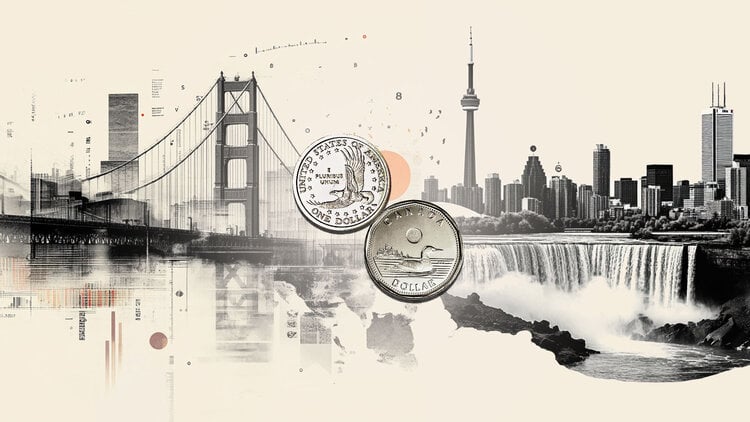A city is rising from the waters of the Indian Ocean. On a turquoise lagoon, just 10 minutes by boat from Male, capital of the Maldives, a floating city big enough to house 20,000 people is being built.
Designed in a similar pattern to so-called brain corals, the city will consist of 5,000 floating units, including homes, restaurants, shops and schools, with canals in between.
The first units will open this month, with residents starting to move in early 2024. The entire city is expected to be completed by 2027.
The project – a joint venture between the Dutch Docklands property developer and the Maldives government – is not intended to be a wild experiment or a futuristic vision: it is being built as a practical solution to the harsh reality of sea level rise.
Archipelago of 1,190 low-lying islands, the Maldives is one of the world’s most vulnerable nations to climate change. About 80% of its land area is less than 1 meter above sea level, and with levels projected to rise as much as 1 meter by the end of the century, almost the entire country could be submerged.
But if a city floats, it can rise along the sea. This is “new hope” for the more than half a million people living in the Maldives, said Koen Olthuis, founder of Waterstudio, the architectural firm that designed the city.
“This can prove that there are affordable housing, large communities and normal seaside cities that are also safe. Maldivians will go from climate refugees to climate innovators,” he told CNN.
Floating Architecture Hub
Born and raised in the Netherlands – where about a third of the land is below sea level – Olthuis has been close to water all his life.
His maternal side of the family was a shipbuilder and his father comes from a line of architects and engineers, so it seemed natural to combine the two. In 2003, Olthuis founded Waterstudio, an architectural firm dedicated entirely to building over water.
Back then, the signs of climate change were there, but they weren’t considered a big enough problem to build a company around it, he recalls.
The biggest problem, then, was space: cities were expanding, but land suitable for new urban development was running out.
However, in recent years, climate change has become “a catalyst”, pushing floating architecture into the future. mainstream. Over the past two decades, Waterstudio has designed more than 300 houseboats, offices, schools and health centers around the world.
The Netherlands has become a hub for the movement, housing floating parks, a floating dairy farm and a floating office building, which serves as the home of the Global Adaptation Center (GCA), an organization focused on scaling solutions. of climate adaptation.
Patrick Verkooijen, CEO of GCA, sees floating architecture as a practical and economically smart solution to rising sea levels.
“The cost of not adapting to these flood risks is extraordinary,” he told CNN .
“We have a choice to make: either we delay and pay, or we plan and thrive. Floating offices and floating buildings are part of this climate planning for the future.”
Last year, floods cost the global economy more than $82 billion, according to reinsurance agency Swiss Re, and as climate change causes more extreme weather, costs are expected to rise.
A report from World Resources Institute predicts that by 2030, urban properties worth more than US$700 billion will be impacted annually by coastal and riverine flooding.
But despite the boost in recent years, floating architecture still has a long way to go in terms of scale and accessibility, Verkooijen said.
“This is the next step on this journey: how can we grow and, at the same time, how can we accelerate? There is an urgency for scale and speed.”
A normal town, just floating around
The Maldives project aims to achieve both, building a city for 20,000 people in less than five years. Other plans for floating cities have been launched, such as Oceanix City in Busan, South Korea, and a series of floating islands in the Baltic Sea developed by Dutch company Blue21, but none competes on this scale and timeframe.
The town of Waterstudio was designed to appeal to the local population with its rainbow colored houses, large balconies and ocean views. Residents will get around on boats, or they can walk, cycle or drive electric scooters and buggies through the sandy streets.
It offers a space hard to find in the capital – Male is one of the most populous cities in the world, with over 200,000 people crammed into an area of around eight square kilometers.
And prices are competitive with those on Hulhumalé (an artificial island built nearby to ease overcrowding): from $150,000 for a studio to $250,000 for a family home, Olthuis said.
The modular units are built at a local shipyard and then towed to the floating city. Once in position, they are attached to a large underwater concrete hull, bolted to the sea floor on telescopic steel stilts that let you float smoothly with the waves.
The coral reefs that surround the town help to provide a natural wave break, stabilizing it and keeping residents from feeling seasick.
Olthuis said the structure’s potential environmental impact was rigorously assessed by local coral experts and approved by government authorities before construction began.
To support marine life, artificial coral reefs made of foam glass are connected to the lower part of the city, which he says helps to stimulate the natural growth of corals.
The goal is for the city to be self-sufficient and have all the same functions as one on land. There will be electricity, powered predominantly by on-site solar energy, and the sewage will be treated locally and reused as fertilizer for the plants.
As an alternative to air conditioning, the city will use deep-water sea cooling, which involves pumping cold water from the sea floor into the lagoon, helping to save energy.
By developing a fully functional floating city in the Maldives, Olthuis hopes that this type of architecture will be taken to the next level. It will no longer be “bizarre architecture” found in luxurious locations commissioned by the super-rich, but a response to climate change and urbanization that is practical and affordable, he said.
“If I, as an architect, want to make a difference, we have to raise the bar – above the sea and work,” he said.
Source: CNN Brasil
I’m Susan Karen, a professional writer and editor at World Stock Market. I specialize in Entertainment news, writing stories that keep readers informed on all the latest developments in the industry. With over five years of experience in creating engaging content and copywriting for various media outlets, I have grown to become an invaluable asset to any team.







